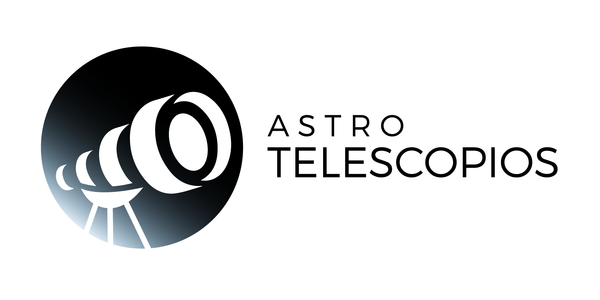
Exploring the Universe through the Lens: Cameras for Astronomy
Astronomy, the science dedicated to the study of celestial objects, has fascinated humanity for centuries. From observing stars and planets with the naked eye to exploring the far reaches of the universe with space telescopes, technology has played a vital role in the advancement of this science. One of the essential components of any modern astronomical observation is the astronomical camera , which allows us to capture amazing images of the most distant and mysterious objects in the cosmos.
Types of Astronomical Cameras
Astronomical cameras are specialized tools designed to capture images of celestial objects. There are several types of astronomical cameras, each with its own characteristics and applications:
1. CCD Cameras (Charge Coupled Devices)
CCD cameras are the most common in astronomy. They use CCD image sensors to convert light into electrical signals which are then transformed into digital images. These cameras are highly sensitive and are ideal for capturing faint objects and precise details in astronomical objects. They are widely used by amateur and professional astronomers.
2. CMOS (Complementary Metal Oxide Semiconductor) Cameras
CMOS cameras are a newer technology that has gained popularity in astrophotography. They offer a high reading speed, making them ideal for capturing moving objects, such as planets and the Moon. Additionally, they are more affordable compared to CCDs, making them accessible to amateur astronomers.
3. DSLR (Digital Single Lens Reflex) Cameras
Conventional DSLR cameras can also be used in astrophotography with the help of adapters and specialized software. These cameras are versatile and allow photographers to capture both ground scenes and images of the night sky. However, they may not be as sensitive as specialized CCDs or CMOS. They also require specific adapters and weigh more, so you have to make sure that the focuser and mount can handle the extra weight.
4. Telescope Cameras
Some telescopes come equipped with built-in cameras to capture astronomical images. These cameras are usually designed specifically for the telescope in question and offer high image quality.
5. Large Format Cameras
Large format cameras are used to capture wide-angle images of the night sky. These cameras are ideal for landscape astrophotography and capturing auroras and the Milky Way.
Key Factors in Choosing an Astronomical Camera
When selecting an astronomical camera, several factors must be taken into account:
1. Sensor Size
The size of the camera sensor affects image quality and light sensitivity. Larger sensors tend to capture higher quality images, but they can also be more expensive.
2. Resolution
Resolution determines the amount of detail that can be captured in an image. For small or distant objects, higher resolution is essential.
3. ISO sensitivity
The camera's ISO sensitivity determines how much light is needed to obtain a well-exposed image. A higher ISO sensitivity is useful for faint objects, but can introduce noise into the image.
4. Refrigeration
Some astronomical cameras come with cooling systems that reduce thermal noise in images. This is especially important in long exposure observations. These are the recommended cameras for deep sky photos.
5.Software
Camera control and image processing software is crucial in astrophotography. Make sure the camera is compatible with appropriate software and that you can process your images effectively.
Tips for Astrophotography
Astrophotography is an art that combines astronomy and photography. Here are some tips for those who wish to venture into this exciting hobby:
-
Learn about the sky : Learn the constellations and locations of the celestial objects you want to photograph.
-
Use a stable tripod and mount : Even with an astronomical camera, a stable tripod is essential to avoid unwanted movement. Additionally, if you want deep sky photos or more detailed photos, you will need a mount with an automatic tracking system. Make sure you do not exceed 70% of the total weight that your mount supports to take better quality astrophotography.
-
Learn to process images : Post-production is essential in astrophotography. Learn how to stack and adjust your images for stunning results.
-
Practice patience : Astrophotography can be challenging and requires time and patience. Don't be discouraged if you don't get perfect results right away.
-
Keep a record : Keep a record of your observations and experiments. This will help you improve over time.
Astronomical cameras have revolutionized our understanding of the universe and have allowed astronomers and amateurs to explore the deepest corners of the cosmos. Whether you want to capture the majesty of a distant galaxy or the detail of a nearby planet, a suitable astronomical camera can be your window to the universe.
Our recommendation of astronomical cameras
If you start now, we recommend that you use a planetary camera, to take your first steps with image processing and familiarize yourself with the software and the sky. Of course you can take advantage of that reflex camera you have at home, but astronomical cameras are designed to be attached to your telescope and photograph the sky. With the camera you can also see the image live through your laptop and take snapshots.
A good piece of equipment to get started with planetary photography is the Sky-Watcher Mak127 AZ-Go2 Telescope and the T130 PLUS digital camera that takes 1280x1024 pixel photographs. With the MAK 127 telescope you can guide yourself through the sky through your mobile phone thanks to WiFi technology.
Contact us if you need personalized advice.
